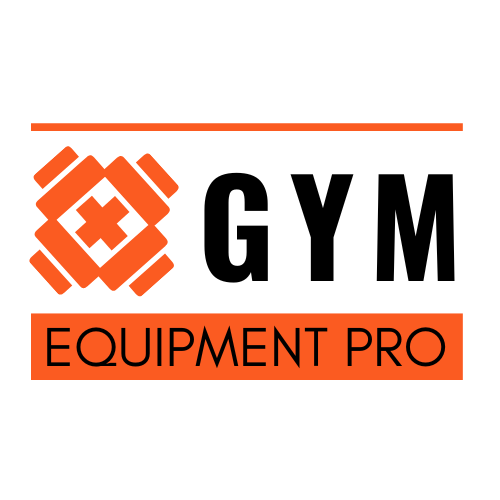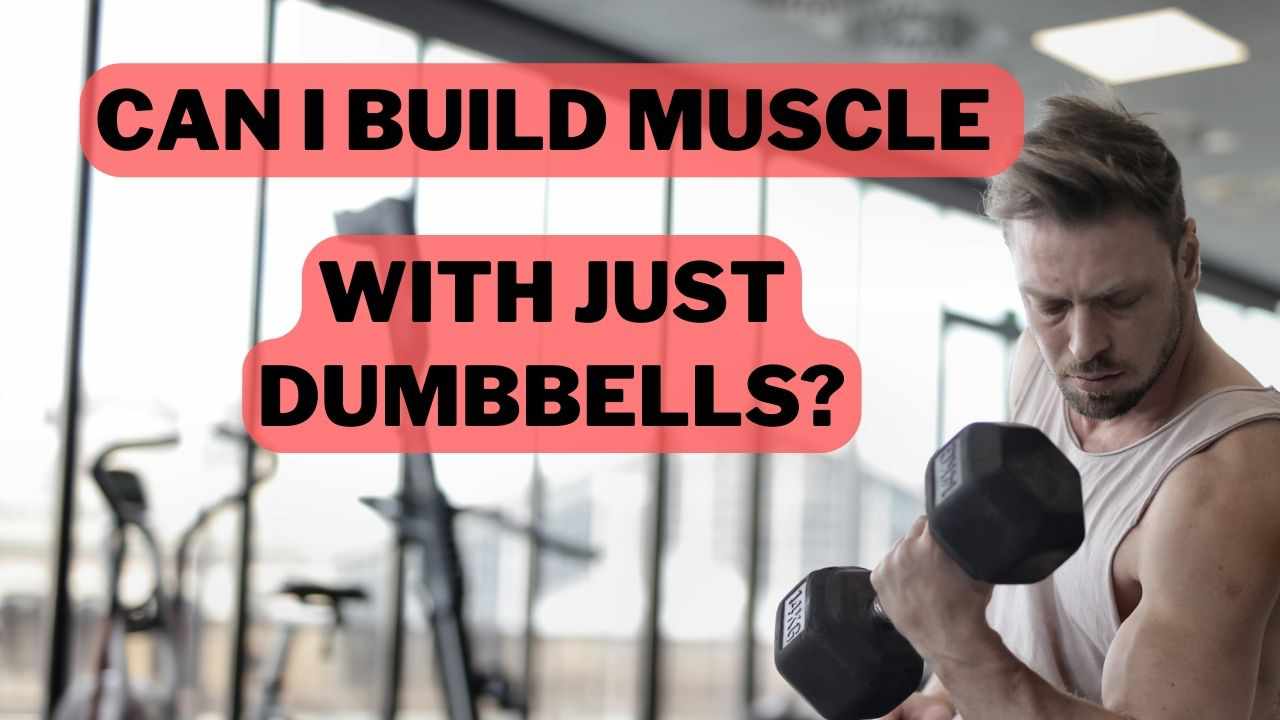Can I Build Muscle With Just Dumbbells? – It is possible to build muscle with just dumbbells. In fact, it is easier than you might be thinking. The key to building muscle with just dumbbells is to get the right exercise routine. In this article, we will explain what the best exercises are for building muscle, as well as how to perform them.
This post is for people who want to know the basics of weight training, and how to use dumbbells in order to build muscle. It’s a great starting point if you’re new to the world of weight training, or if you’re looking for a simple workout plan that you can follow at home.
Understanding How Muscle Building Works?
To understand how dumbbells can help build muscle, it’s important to first understand the basics of muscle growth. Muscle building, or hypertrophy, occurs when muscle fibers are damaged and then repaired through a process called protein synthesis. This repair process leads to an increase in muscle size and strength over time.
Factors That Contribute To Muscle Growth
Several factors contribute to muscle growth, including genetics, age, gender, nutrition, and exercise. While some of these factors are beyond our control, exercise is one factor that we can manipulate to promote muscle growth. Specifically, strength training exercises like those performed with dumbbells, can be highly effective for promoting muscle growth.
How Strength Training Promotes Muscle Growth?
Strength training works by placing a stress on the muscles, causing microscopic tears in the muscle fibers. These tears then trigger the repair process, which leads to muscle growth. As the muscles repair themselves, they become stronger and better able to handle the stress of future workouts.
One key factor in promoting muscle growth through strength training is progressive overload. This refers to gradually increasing the weight or intensity of your workouts over time to continue challenging your muscles and promoting growth.
This is where dumbbells can be particularly useful, as they allow for easy adjustment of weight and can be used for a wide variety of exercises.
Another important factor in promoting muscle growth through strength training is proper nutrition. The repair process that leads to muscle growth requires adequate protein intake, as well as a calorie surplus to fuel the repair process. Without proper nutrition, muscle growth may be limited, even with an effective strength training routine.
Can I Build Muscle With Just Dumbbells?
Yes! Exercise programs that involve dumbbells work out all major muscle groups of your body and improve your overall health. By lifting weights, you develop muscles that are vital for running, jumping, walking and moving throughout your day.
1. The Basics of Weight Training
Weight training is essential: Don’t skip weight training. It’s one of the most important aspects of building muscle.
When it comes to building muscle, there are a lot of different ways to go about it. Some people prefer to lift weights three times a week while others stick with one or two workouts a week. Whatever your preferred method of exercise, one thing is clear—you need to keep at it.
The benefits of weight training are well documented. It is a proven way to increase strength, decrease body fat, and burn calories. However, there are many different ways to train and most of them are effective.
2. Common Dumbbell Exercises for Building Muscle
Dumbbells are a versatile and effective tool for building muscle. They allow you to work on each side of your body independently, ensuring that one side doesn’t compensate for the other, leading to imbalances. Dumbbells also offer a greater range of motion, allowing you to work muscles in ways that barbells or weight machines can’t.
Chest
- Dumbbell Bench Press
- Lie flat on a bench with a dumbbell in each hand, resting on your thighs.
- Lift the dumbbells up, one at a time, until you’re holding them at shoulder-width apart.
- Slowly lower the dumbbells to your chest, keeping your elbows at a 45-degree angle.
- Push the dumbbells back up, extending your arms fully.
- Dumbbell Flyes
- Lie flat on a bench with a dumbbell in each hand, held directly above your chest with your palms facing each other.
- Lower the dumbbells to your sides in a wide arc, keeping a slight bend in your elbows.
- Bring the dumbbells back up, crossing them slightly at the top.
Back
- One-Arm Dumbbell Row
- Stand with your feet shoulder-width apart, holding a dumbbell in your right hand.
- Lean forward, supporting your weight with your left hand on a bench or other stable surface.
- Raise the dumbbell to your side, keeping your elbow close to your body.
- Lower the dumbbell back down, then repeat on the other side.
- Dumbbell Pullover
- Lie flat on a bench with a dumbbell held in both hands, extended straight up over your chest.
- Slowly lower the dumbbell back over your head, keeping your arms straight.
- Bring the dumbbell back up over your chest, maintaining control throughout the movement.
Shoulders
- Dumbbell Shoulder Press
- Stand with your feet shoulder-width apart, holding a dumbbell in each hand at shoulder height.
- Press the dumbbells up above your head, extending your arms fully.
- Lower the dumbbells back down to shoulder height.
- Lateral Raise
- Stand with your feet shoulder-width apart, holding a dumbbell in each hand by your sides.
- Raise the dumbbells out to your sides, keeping your elbows slightly bent.
- Lower the dumbbells back down to your sides.
Arms
- Dumbbell Bicep Curl
- Stand with your feet shoulder-width apart, holding a dumbbell in each hand by your sides, with your palms facing forward.
- Curl the dumbbells up towards your shoulders, keeping your elbows close to your sides.
- Lower the dumbbells back down to your sides.
- Dumbbell Tricep Extension
- Stand with your feet shoulder-width apart, holding a dumbbell in your right hand.
- Raise the dumbbell above your head, keeping your elbow close to your head.
- Lower the dumbbell behind your head, keeping your upper arm still.
- Bring the dumbbell back up above your head, then repeat on the other side.
Legs
- Dumbbell Squat
- Stand with your feet shoulder-width apart, holding a dumbbell in each hand at your sides.
- Lower yourself into a squat, keeping your back straight and your knees aligned with your toes.
- Stand back up, extending your legs fully.
3. A Sample Workout Plan
This workout plan is designed for beginners. You can use it as a starting point or use it to supplement your own training.
In order to get a good workout, you should aim to do 3 sets of 5 reps for each exercise. For example, if you are doing Dumbbell Squat, then you would do 3 sets of 5 reps for Dumbbell Bench Press.
To get started, follow the steps below.
Day 1: Dumbbell Squat
Day 2: Dumbbell Bench Press
Day 3: Dumbbell Row
Day 4: Dumbbell Press
Day 5: Dumbbell Curl
Day 6: Dumbbell Deadlift
It is important that you do not overdo it in the first few weeks and risk injury. Start off with lighter weights and gradually increase the weight as your body gets used to it.
It is also important that you stretch after your workout so that your muscles can recover and grow stronger!
4. What’s Next?
Nevertheless, If You Want to Build Muscle, You Need to Work Out.
Whether you’re a beginner or a seasoned gym rat, there are always things to learn about building muscle. One of the most important things to remember is that building muscle doesn’t happen overnight. It’s a process that takes time and consistency. If you want to build muscle, you need to keep at it.
However, if you want to build muscle and burn fat, you need to do more than just exercise and eat right & get enough rest.
How Can I Build Muscle Fast With Dumbbells?
Building muscle is a slow process. It takes a lot of time, effort and dedication to get the body you want. Most people have a dream body—a lean, toned physique that is as close to perfect as they can get. But most people never achieve that body because they don’t know how to build muscle fast.
Whether you are a beginner or an experienced lifter, there are many benefits that you can gain from dumbbells. They are the most widely used and versatile piece of exercise equipment.
The most popular use of dumbbells is to build muscle. There are many different exercises that can be done with them, but the best exercises for building muscle are:
- Bicep Curls
- Lateral Raises
- Dumbbell Squats
How To Get Big Muscles Using Dumbbells
Heavier weights are harder to lift and require more effort by the muscles. If you use lighter weights for more repetitions, your muscles will not be as exhausted and it won’t be as demanding on your body. Make sure to go heavy, but keep reps low and exhaust your muscles!
Low-weight and high-rep weight training will make you toned, but you need to keep the weight heavy enough to exhaust your muscles after 6-10 reps. This will only bulk up your muscle if you are doing it correctly.
When you get to the point where you have enough muscle mass that it doesn’t tire out easily, use heavier weights. As long as you’re continuously increasing the weights over time, your muscles should grow and become even more powerful.
Should You Train With Dumbbells Every Day?
It’s good to take a day off after serious weight lifting. This doesn’t mean you should stop exercising completely – just switch focuses to lighter weight or targeted exercises like stretching, foam rolling or cardio.
If you’re trying to cut, get a muscular look, or lose weight it’s important to stay active on your off days. This will keep your metabolism up, which will also have a positive impact on those goals.
It doesn’t matter what muscle groups you work on during the course of a week so long as you work out different ones. For example, after working your arm muscles, focus on your legs the next day. This will allow for more efficient recovery and prevent overuse injuries.
It’s important to take rest days if you’re lifting heavyweight. Every day working out can increase the risk of injuries, harm performance, and contribute to lack of sleep & mood swings.
Common Myths About Building Muscle With Dumbbells
When it comes to building muscle with dumbbells, there are many myths and misconceptions that can make it difficult to separate fact from fiction. Here are some of the most common myths about building muscle with dumbbells and why they are false:
Myth #1:
Dumbbells are only for toning, not building muscle This myth is often perpetuated by the misconception that lifting lighter weights with higher reps will only tone and not build muscle. However, the truth is that dumbbells can be used to build muscle just as effectively as barbells or machines. The key is to use a weight that is challenging enough to cause muscle fatigue within the target rep range for muscle hypertrophy (usually 8-12 reps).
Myth #2:
Heavy lifting is the only way to build muscle While lifting heavier weights can certainly help to build muscle, it is not the only way. By using dumbbells, you can perform a variety of exercises that can help to build muscle through progressive overload, which involves gradually increasing the weight or difficulty of an exercise over time.
Myth #3:
You need to lift until failure to build muscle While lifting until failure can certainly help to stimulate muscle growth, it is not necessary for muscle building. In fact, lifting until failure can be counterproductive as it can lead to muscle damage and impede recovery. Instead, focus on lifting within the target rep range for muscle hypertrophy and gradually increasing the weight or difficulty of an exercise over time.
Myth #4:
You can spot reduce fat with dumbbell exercises Unfortunately, it is not possible to spot reduce fat with any exercise, including dumbbell exercises. Fat loss occurs through a combination of a calorie deficit and overall body fat reduction. While dumbbell exercises can certainly help to build muscle and increase overall calorie expenditure, they will not specifically target fat in one area of the body.
Conclusion: Can I Build Muscle With Just Dumbbells?
In conclusion, the answer to this question is yes, you can build muscle with just dumbbells. There are many exercises that you can do using only dumbbells to get a great workout. You can use them for strength training, or you can even use them for cardio. However, if you want to see dramatic results, you need to incorporate weight training into your routine.
FAQ: Can I Build Muscle With Just Dumbbells?
Can I build muscle with just dumbbells?
Yes, you can build muscle with just dumbbells. Dumbbells offer a wide range of exercises that can target all major muscle groups.
How many dumbbell exercises should I do per workout?
It depends on your fitness level and goals. Generally, it’s recommended to do 3-4 exercises per muscle group, with 8-12 reps per set.
Should I lift heavy or light dumbbells to build muscle?
It’s recommended to use a weight that is challenging but manageable for 8-12 reps per set. This can vary based on your fitness level and goals.
Can dumbbells help me lose weight?
Yes, dumbbells can help you lose weight by increasing muscle mass and boosting metabolism. However, a healthy diet and cardio exercise are also important for weight loss.
What are some common mistakes to avoid when using dumbbells for muscle building?
Common mistakes include using improper form, lifting too heavy or too light, neglecting certain muscle groups, and not allowing enough recovery time.
How long does it take to see results from dumbbell training?
Results can vary based on individual factors such as fitness level, diet, and consistency of workouts. However, with regular training and proper technique, results can typically be seen within a few weeks to a few months.



